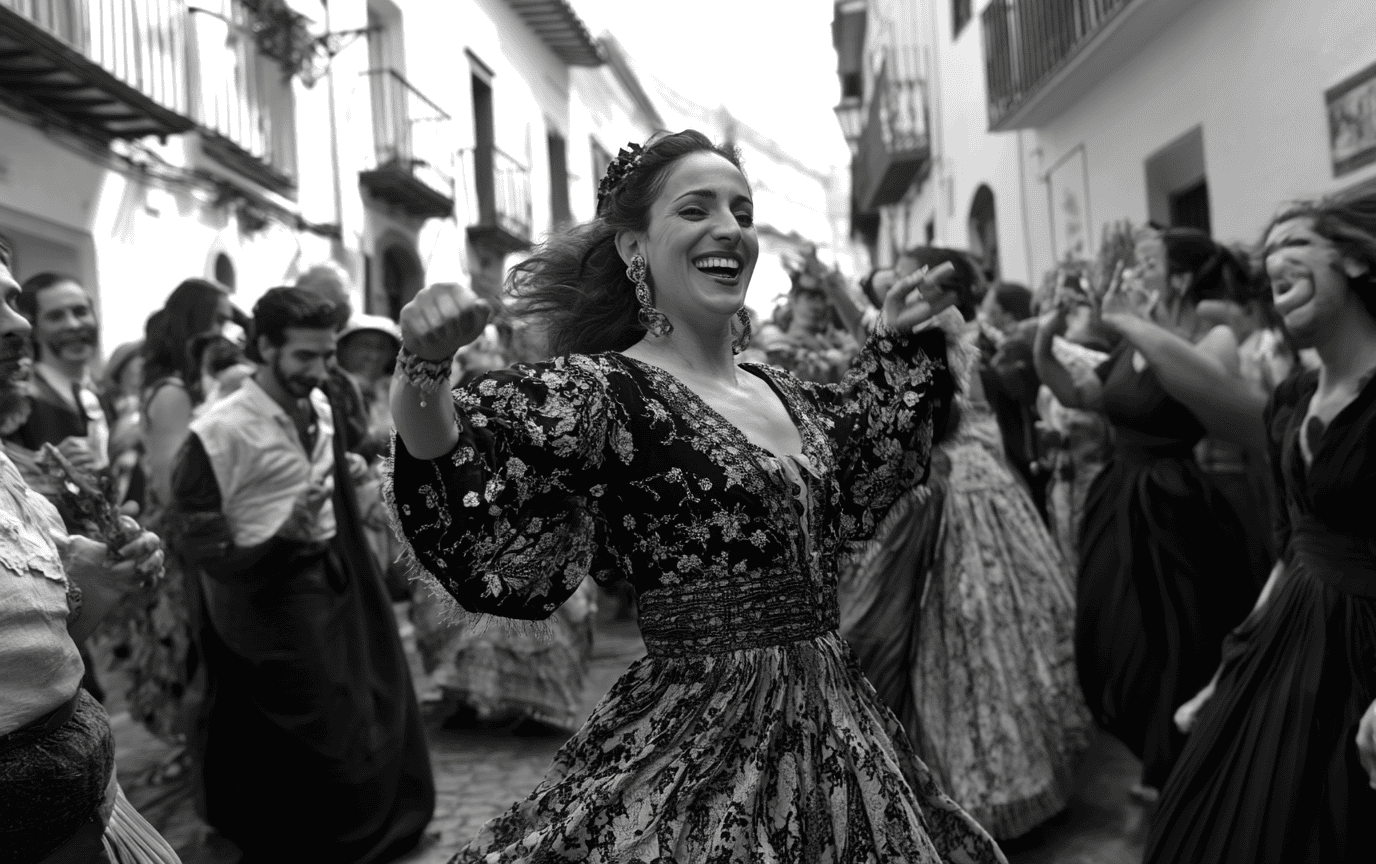The Cultural Impact of Flamenco in Spain: A Vibrant Tapestry of Emotion and Tradition
Flamenco, an enchanting whirlwind of fervor and artistry, transcends mere dance or music. It is, instead, a dive into the very soul of Spain, capturing the emotions and histories woven into the fabric of Andalusian life. With every stomp of the foot and strum of the guitar, flamenco offers a visceral experience that envelops the audience in raw intensity. It is an embodiment of cultural expression that reaches far beyond its regional origins, asserting itself with a vigor that speaks to the human experience across the globe.
Origins and Evolution of Flamenco
To understand flamenco is to explore a history rich with complexity and color. It first emerged in the heart of Andalusia during the 18th century, a melting pot of cultures where the Romani, Moorish, Jewish, and indigenous Spanish traditions collided in a beautiful symphony of sound and movement. Life in the bustling streets of Seville, Cordoba, and Granada birthed a form of expression that was initially rooted in the cries of the oppressed, gut-wrenching stories told in the shadows of tabernas and cortijos.
“Tell me the story,” she whispered, her hands poised delicately, ready to capture a slice of longing with every movement.
It was in these early community gatherings that flamenco blossomed, transforming from oral traditions into a diverse art form. The 19th century saw the rise of cafés cantantes, venues where singers, guitarists, and dancers came together, and flamenco began to evolve into the magnificent performance art it is today. It became a stage for professional artists who displayed both their passion and skill, breathing life into the poignant tales of their ancestors.
Cultural Significance of Flamenco
Flamenco is not just a performance; it is an outpouring of emotion — of joy, sorrow, love, and defiance. Its significance extends beyond entertainment; it is a statement of resilience and identity, a reflection of a rich cultural tapestry woven from many threads. Recognized internationally, flamenco was deemed an Intangible Cultural Heritage of Humanity by UNESCO in 2010, solidifying its status as a symbol of Spanish identity.
Cultural Identity and Unity
The heart of flamenco beats with the rhythms of cultural unity. It is an iconic symbol of Spanish pride, representing a myriad of influences that converge to form a distinct artistic identity. The Gitano community’s deep involvement in shaping flamenco has imbued it with a profound sense of history, echoing the spirits of centuries past. Each performance becomes a dialogue between various cultural identities, embodying the concept of mestizaje — the blending of cultures that defines Spain’s narrative.
“Let the world hear us,” the dancer declared, as her feet whispered secrets to the wooden floor, challenging norms and celebrating life through rhythm.
Emotional Expression and Artistic Creativity
Through the intertwining of cante (singing), baile (dance), and toque (guitar playing), flamenco artists masterfully convey a kaleidoscope of emotions. Each rise and fall, each note and pause, invokes a visceral response that resonates within the audience. The complexity of flamenco dance is expressed in the subtleties; men often employ intricate footwork while women embody grace infused with strength, swirling their dresses like the petals of a flower in the wind.
Global Influence and Modernization
As the sun casts its glow over flamenco’s origins, its influence spreads like ripples in a pond across continents. From Japan to the United States, flamenco found new homes and interpretations, evolving within various cultural contexts. The genre has seeped into contemporary dance and fusion music, inspiring artists far and wide.
A flamenco guitarist strumming on a New York street corner one evening might fuse traditional melodies with jazz accents, showcasing how adaptable the art form can be. Modern flamenco artists embrace this fluidity, often blending African rhythms or rock tones into their shows, ensuring that the essence of flamenco lives on in fresh, innovative ways.
Flamenco in Modern Spanish Society
In contemporary Spain, flamenco continues to serve as a cultural bridge, fostering community and connection among various societal sectors. From local festivals that serve as platforms for emerging talent to prestigious stages where the renowned gather, flamenco remains a pulsating heartbeat of Spanish life.
“Dance with me; let us remember our roots,” whispered the elder, as younger dancers hesitated, caught between tradition and modernity.
Its powerful presence is notable not just in theaters but in countless gatherings, celebrations, and even informal street performances. Each event underscores flamenco’s role as a repository of memory and a connection to regional identity, especially in Andalusia, Murcia, and Extremadura.
Passing Down the Tradition
The art of flamenco is safeguarded through the generations, primarily transmitted orally among family and community members. This dynamic transmission ensures that newer generations can access both the technical intricacies and the emotional profundity of flamenco.
Cultural centers, music academies, and flamenco clubs serve as bastions for preserving this art form. Teachers pass on the lessons learned from their predecessors while inspiring a new cohort to share their interpretations of this passionate expression. Workshops bloom across cities, drawing local and international students eager to learn the rhythms of their ancestors.
Tips for Exploring Flamenco
If you’re inclined to delve into the world of flamenco, consider these starters:
- Learn Basic Flamenco Rhythms: Understanding compás is essential for engaging with both dance and music.
- Immerse Yourself in Flamenco Culture: Watching films like Flamenco, Flamenco by Carlos Saura can provide context and deepen appreciation.
- Support Local Flamenco Artists: Attend live performances or explore intricate music collections from contemporary flamenco musicians to connect more personally with the art form.
Conclusion
Flamenco embodies the diverse, passionate spirit of Spain — vibrant, sorrowful, joyous, and reflective. It holds an emotional weight that resonates through generations, asserting its significance as a unifying force in both culture and identity. This art form creates profound connections with those who experience it, whether as performers or audience members.
For travelers seeking to understand the soul of Spain or enthusiasts wanting to appreciate a pivotal piece of cultural heritage, flamenco stands as an invitation — an opportunity to engage with the heartbeats of a nation and the stories buried beneath its lively façade.
Feel Spain’s passion with discover Spain’s hidden culinary treasures, explore its culture in Barcelona: Gaudí & coastal flair, and plan an affordable trip with unlock amazing savings with off-peak travel.
Interested in more insightful reads? Check out our Travel Tips section for the latest advice. For lifestyle inspiration, explore our Lifestyle category, and dive into amazing destinies at Destinations. Don’t forget to connect with us on YouTube or follow our adventures on Instagram and Pinterest.













